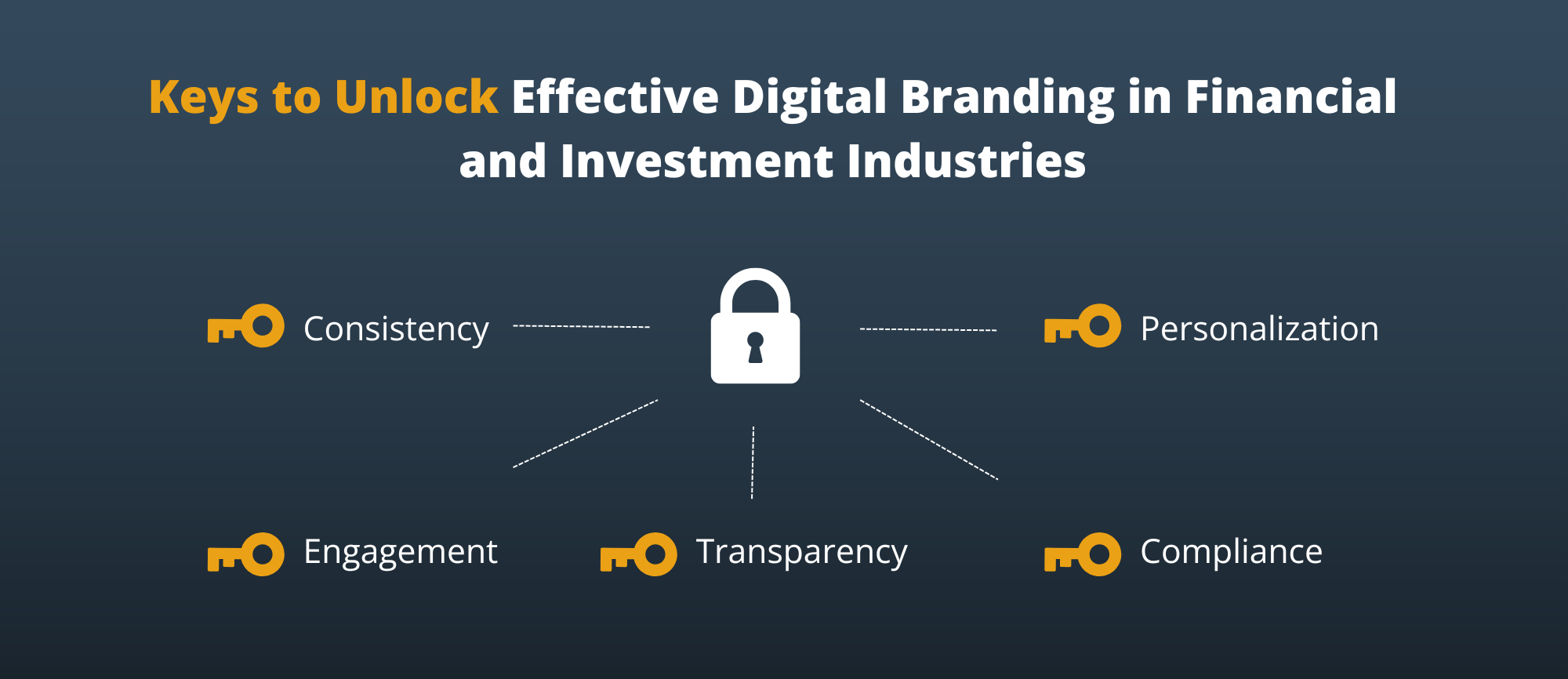Investment Branding in 2025: Art Meets Science
Leveraging Data Analytics and Brand Marketing for Better Storytelling
Despite trendy proclamations, marketing analytics and AI alone cannot build strong investment marketing and branding. Yet, conversely, focusing entirely on good storytelling will only get you so far. Innovative firms understand that the thoughtful convergence of data analytics and brand narratives is what provides a strategic pathway to creating a compelling digital marketing presence.
The financial and investment organizatons who know how to utilize both as complementary elements are the brands that will continue to stand out, drive business, and retain loyalty in 2025 and beyond.
This guide will provide a roadmap to how analytics and an authentic story help achieve differentiation in the investment industry by highlighting the following:
- The critical role and key components of marketing analytics
- The steps to successful digital integration in financial marketing
- The primary pillars of maintaining a sustainable, effective digital presence for the long-term
The Role of Marketing Analytics in Investment Branding
In order to create excellent storytelling in digital form and reach the right audiences, you need data to inform your strategy and guide your voice. Integrated and comprehensive marketing analytics play a pivotal role in understanding audience behavior, preferences, and trends. Data-driven investment brands with integrated and insightful dashboards are more likely to tailor their content and online strategies effectively. Integrating centralized tools like Google Analytics, HubSpot, and SEMrush can provide a streamlined source of truth across your investment marketing channels, and will make for better insights and efficacy. Key aspects of investment marketing analytics include:
- Audience Segmentation: Identifying and categorizing target financial and investor audiences based on demographics, behavior and psychographics.
- Performance Metrics: Tracking key performance indicators (KPIs) such as total reach, engagement rates, conversion rates and ROI.
- Content Analysis: Evaluating which types of content, commentary or thought capital resonate most with your audience.
- Channel Effectiveness: Assessing the performance of various digital platforms, including social media, email, and paid advertising.
- SEO Analytics: Understanding search engine optimization metrics to enhance visibility and discoverability—and drive interested traffic.
- Reporting: Simplify complex data into clear insights and enhance decision-making through easy-to-understand dashboards, visuals and analysis.

Steps to Integrate Analytics with Brand Storytelling and Design
With an understanding of investment marketing and branding analytics, you can now combine the art of storytelling and design with this data science to optimize your brand seamlessly.
- Define Your Brand Story: Craft a compelling narrative that aligns with your brand values and mission. This story should resonate with your target audience and differentiate you from competitors.
- Differentiate through Design: Branding in the investment industry is often a sea of same—make the effort to distinguish your investment brand and materials through refreshed design.
- Set Clear Objectives: Establish specific, measurable goals for your digital branding efforts. These objectives will guide your strategy and provide benchmarks for success.
- Develop Targeted Content: Create content that addresses the needs and interests of your audience segments. Use data insights to determine the most effective formats—across thought capital, infographics, commentary and videos.
- Optimize Channel Strategies: Tailor your approach for each digital channel based on analytics. For instance, focus on high-engagement platforms for social media—most likely LinkedIn in the investment management space—or refine email marketing tactics based on open and click-through rates.
- Implement A/B Testing: Experiment with different content and design variations and marketing strategies. A/B testing allows you to compare performance and optimize based on what works best.
- Monitor and Adjust: Continuously track performance metrics and adjust your strategy as needed. Regularly reviewing analytics ensures you stay aligned with your objectives and audience preferences.
Effective Digital Branding in Financial and Investment Industries
Marketing, just like monitoring and investing in markets, is an ongoing process that requires a vigilant and thoughtful approach that ensures your brand is optimizing the insights of analytics and the value of voice. Here are the keys:

CONSISTENCY: Maintain a cohesive brand voice and visual identity across all channels to reinforce your brand story
PeRSonalization: Leverage data to create personalized experiences for your investor or advisor audiences, enhancing engagement and loyalty.
Engagement: Foster two-way communication with your audience through interactive content, social media interactions, and responsive customer service.
TRANSPARENCY: Build trust by being transparent about your investment strategies, successes and challenges.
Compliance: Ensure all digital marketing activities comply with regulatory standards in the investment industry.
Bringing Brand Voice and Marketing Science Together
By marrying the precision of marketing analytics with the emotional appeal of investment brand storytelling and design, firms have complementary tools to create a robust digital presence that can better resonate with their target audiences. This investment marketing and branding analytical approach enhances brand visibility and drives engagement and growth. As the digital landscape continues to evolve, staying agile, authentic, and data-informed will be your key to maintaining a competitive edge.
MBC Strategic has helped investment management firms of all sizes position their branding, marketing and communications in a way that better connects with their target audiences. Contact us to learn more about how we can help.